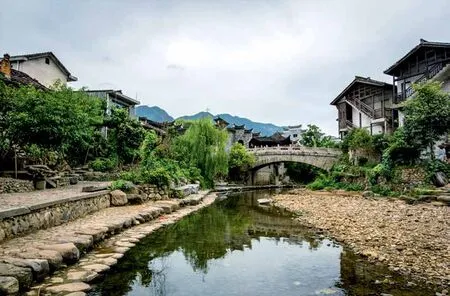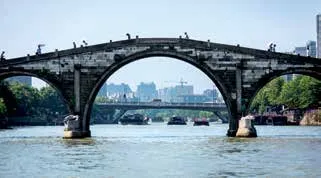CHINA BY JUNKET
TEXT BY LANCE CRAYON PHOTOGRAPHS BY MITCH PE MASILUN
CHINA BY JUNKET
TEXT BY LANCE CRAYON PHOTOGRAPHS BY MITCH PE MASILUN
Four provinces, 16 days, and memories for life
十六天马不停蹄看中国
Ever the dutiful employee, this summer I went on a Chinese state-run media junket under the banner “China through the Eyes of Foreigners” sponsored byChina Daily, where I work as a videographer and English editor. Over the course of 16 days I traveled to Gansu, Shaanxi, and Zhejiang provinces as well as Tianjin with a group of photo journalists from Thailand, India, Philippines, Nepal, Indonesia, South Korea and Malaysia.
These trips can be grueling since you never stop moving, and each day can last as long as 16 hours, all without a day off. The days would begin early, often at a hotel that either doesn’t have coffee or that serves something barely resembling it, and breakfast feels like a version of what you had for dinner the night before. The days often conclude with a dinner disguised as abaijiudrinking contest with local officials, which, frankly, I enjoy. Since moving to China, four years ago, I’ve been on a handful of these trips, and whenever I’m asked to participate, I always say, “Yes.”
GANSU PROVINCE
Minqin County (民勤县), about 230 miles north of Lanzhou in Gansu Province, is big on sunflower farming. Large tracts of land filled with sunflowers bigger than dinner plates cover 90 percent of the county, a Van Gogh heaven. Sunflowers require little water, so, with the surrounding acreage desert, the province leads the nation in sunflower oil production. Once out of those parched surroundings, the trip led to Hongyashan Reservoir (红崖山水库 Hóngyáshān Shuǐkù) in Minqin, the largest desert reservoir in Asia; it provides fresh water to about 300,000 people and farms throughout the county.
It was rather fitting that the first night—after a day of desert—ended with downing shots ofbaijiuwith the local officials. Drinking with the locals is part of the job for these trips, and refusing to do so can be perceived as a sign of disrespect.
The next day—my head in no mood for sightseeing—we went to Tiger Pass (老虎口 Lǎohǔkǒu), a desert area filled with small bushes that were planted there to protect the surrounding residents and farms from the impact of severe sandstorms, a project known as the Green Wall of China. Though the impacts of such a project are in question, the dedication to it is unwavering. Near this massive natural engineering project is the small town of Datan (大滩乡), where a bonfire party was given in honor of the local sunflower oil company, complete with Han and Mongolian singers performing for local farmers—all courtesy of the Gansu Joy company. Young women, dressed in traditional Tibetan outfits, circled the bonfire area holding hands, laughing, and singing.
Luo Hongyi, an opera singer from the Gansu Drama Academy, sang a note-for-note rendition of “O Sole Mio,” which had to be one of the most surreal moments I have witnessed in China.Watching a Chinese man sing one of the most popular Italian opera songs in a desert before a crowd of farmers is not something you can easily imagine. It’s a scene that has to happen right in front of you before you can let it sink in. I felt like I was in a scene from a film about life after a nuclear holocaust, and this little community I had accidentally stumbled upon was one of only a few that remained on the planet and throwing a bonfire party was something they did to escape the reality of impending doom.

A farmer poses for pictures in a sea of sunflowers in Minqin County

Legions of ceramic soldiers stand ready at the Terracotta Warrior Museum in Shaanxi Province
With that dreamlike experience done and dusted, Minqin County and Gansu Province were in our rearview mirror; we were heading for one of the most iconic Chinese landmarks in history.
SHAANXI PROVINCE AND TIANJIN
Heading east to Shaanxi Province, the journey began outside the city of Xi’an where we visited the Guanzhong Folk Art Museum (关中民俗艺术博物院 Guānzhōng Mínsú Yìshù Bówùyuàn) and the Terracotta Warrior Museum (秦兵马俑博物馆 Qín Bīngmǎyǒng Bówùguǎn).

A musician during alaoqiangperformance at the Guanzhong Folk Art Museum in Shaanxi Province

Ancient Culture Street is abuzz with the innumerable arts and crafts of China's past, located in Tianjin
The Folk Art museum offerslaoqiang(老腔) opera performed by the elderly, some of the last vestiges of a form of opera that originated in Huayin County during the Western Han Dynasty (206 B.C.–25 A.D.). The museum consists of homes and courtyards that have been relocated from all parts of Shaanxi Province, built during the Ming (1368-1644) and Qing (1616-1911) Dynasties.Laoqiangmeans “old song”, featuring stringed instruments such as theerhu(二胡) andruan(阮 or 阮咸 ruǎnxián, a lute). Two male performers roamed the stage singing and shouting; one only had a single tooth and carried a bowl and chopsticks. Another one in the band held a pipe and kept the rhythm going by beating on a piece of wood.
Also, the legendary natural beauty of Huashan (华山)—one of China’s “Five Great Mountains”—was on the busy itinerary. Sadly, on the day I went it was crowded, and I couldn’t witness its splendor due to the dense mountain mist.
With Shaanxi finished, the trip went even further east to Tianjin, delectably close to home in Beijing.
The oft overlooked site of the financial district in Tianjin is well worth a walk through, and the same goes for the Ancient Cultural Street (天津古文化街 Tiānjīn Gǔwénhuà Jiē). Of course, it’s great to take a horse-drawn carriage ride through the Five Avenues (五大道 Wǔ Dàdào) district, and, as the sun sets, a riverboat cruise along Haihe (海河) is a must.

Nianbadu village in Zhejiang Province is home to 13 different dialects
The riverboat cruise along the Haihe runs through the city and provided me with some good video for the trip—a sun setting on a city full of life. For architecture geeks, Tianjin is an emerging city concrete jungle that rivals its bigger Beijing neighbor, it’s surrounded by buildings of great historical importance. The brightly lit Tianjin Eye, one of the biggest Ferris wheels in the world—the only one of its kind built on a bridge—is a must see. Sadly, it was closed when we visited.
ZHEJIANG PROVINCE
So close to home, the trip headed to China’s eastern province of Zhejiang, a land of ancient villages, rivers, and mountains. It was also where we took our second riverboat cruise, this one along the Grand Canal (京杭大运河 Jīngháng Dàyùnhé). The canal was created over 2,500 years ago and flows through Hebei, Shandong, Jiangsu and Zhejiang provinces, stretching to Beijing and Tianjin. At 1,794 kilometers long, it’s the world’s longest canal.
The trip told a very familiar tale; we could see older buildings and homes making way for newer buildings. As for the river itself, it’s filled with tankers transporting minerals and materials necessary for the city’s development.
Then, our party of journalists and photographers spent the day visiting an arts and crafts museum that featured artisans hard at work making traditional wares, such as calligraphy, landscape painting, and jewelry. Later that evening, we enjoyed another drinking fest with local officials, one that ended with me giving an impromptu speech. After spending the night in Hangzhou, we took a bus to Nianbadu (廿八都), a small well-preserved village that was first established as a military base about 1,000 years ago. The bus ride was a continuous view of lush, green hills covered withrice paddies and other crops that lined the highway for over a hundred miles.

A craftsman at the Hangzhou Arts and Crafts Museum
Nianbadu is home to over 140 family names who speak 13 different dialects. During the Qing Dynasty it was a prosperous trading destination where small merchant boats transported goods to and from Jiangsu, Fujian, and Jiangxi provinces along Maple Stream (枫溪 Fēng Xī) which flows through the town.
The small town has homes from the Ming and Qing Dynasties that now function as museums with different themes. One of the museums is the former residence of Jiang Shouquan (姜守全旧宅 Jiāng Shǒuquán Jiùzhái), a Lieutenant Colonel with the Kuomintang and director with the Bureau of Investigation and Statistics at the Military Council. His residence in 1941 was a training ground for female secret agents. Old military uniforms, weapons, and photos fill each room. After the spies and history, we headed for Jianglang County (江郎县) to the famous Jianglang Mountain. Jianglang is a rock formation divided into three parts, making for some unique scenery, but unless you’re really into hiking, there’s not much else to do.
After arriving at the hotel, I saw a copy of the newspaper,Zhejiang Dailylying on a table in the lobby. It caught my eye because I saw myself on the front page. While I was on the boat in the Grand Canal, a photographer from the newspaper took a picture of me, and a local official at the hotel said the newspaper has a print circulation of two million; I had to laugh.
The Ancient Weir Painting Home (古堰画乡 Gǔyàn Huàxiāng) is a museum art village located in the Liandu District inLishui City and covers an area of 15 square kilometers. Home to the Tongji Weir (通济堰), it contains the world’s first arched dam, one of the five major water conservation projects from ancient China with a history spanning 1,500 years, and it still serves those living along the Bihu Plain. The home is divided into two sections, the first serving as an honor to the weir, and the other half—connected by a short boat ride—is dedicated to painting. While there, I noticed two fishing boats on the river with men throwing small nets, which made for some great video footage and photos.

Boats, barges, and pedestrians travel the Grand Canal, Hangzhou, China

The sun rises over the Yunhe Rice Terrace in Zhejiang Province

A fisherman tries his luck on the river next to the Ancient Weir Painting Home in Zhejiang Province
That evening, I had the opportunity to break away from the group and have dinner with a few friends as well as experience Zhejiang’s pan fried bugs (油炸知了 yóuzhá zhīliao) for the first time. Surprisingly, they were delicious and went particularly well with cold beer.
My morning began at 3:30 am with a trip to Yunhe Rice Terrace (云和梯田 Yúnhé Tītián) to catch what is considered to be one of the best places in the country to see the sun rise. The terrace sits atop dark green rice paddies built in the small surrounding hills; it looks like something out of a fantasy fiction novel with its thick small green hills and houses built at the bottom with smoke billowing from chimneys. As luck would have it, the all important sunrise was unfortunately dampened by cloud cover, the sun never broke through, and the mosquitoes had found us. The terrace was built during the Tang Dynasty (618-907) and later claimed by She ethnic minorities (畲族) from Fujian province. The terrace experienced further development under the Yuan Dynasty (1271-1368) and was expanded by silver miners during the Ming Dynasty. Not far from Yunhe Rice Terrace is the Kenggen Stone Village (坑根村) where She ethnic minorities live and work as farmers. The village is surrounded by tall green mountains. After our return, it was still early, so we were treated to breakfast, tea, and a traditional song and dance performance from the She minority.
For our last stop, the Zhuji Pearl Market (诸暨珍珠市场 Zhūjì Zhēnzhū Shìchǎng), Shaoxing, made a fitting end, the largest pearl market in China. The indoor market, which is large enough to land a small plane, is surrounded by fields where the pearls are harvested. Pearls of all shapes and sizes abound, and when I sent my wife a text, her response was clear: “Don’t leave empty handed.”
And all of a sudden, it was time for me to return to the day job. While on the subway I kept trying to piece the whole trip together. Did I really see a Chinese man sing opera in the desert? There was a moment when I thought I was still on the trip and that when I got off the subway I’d land in a remote village with a long history. I wasn’t bothered about having to go back to my cubicle after traveling for 16 days straight. I was pleased that I returned home with a pearl necklace for my wife, an awareness oflaoqiangopera, along with an appreciation for fried bugs.

